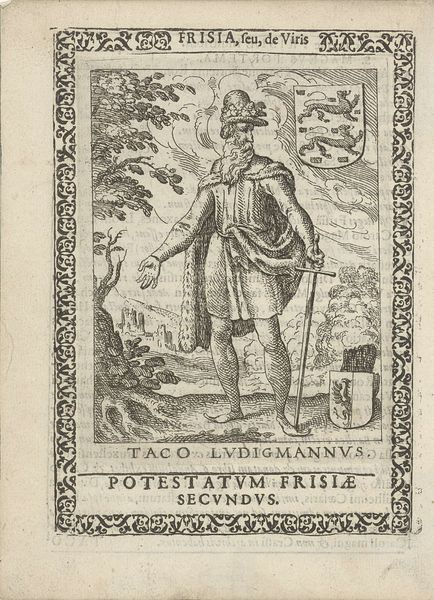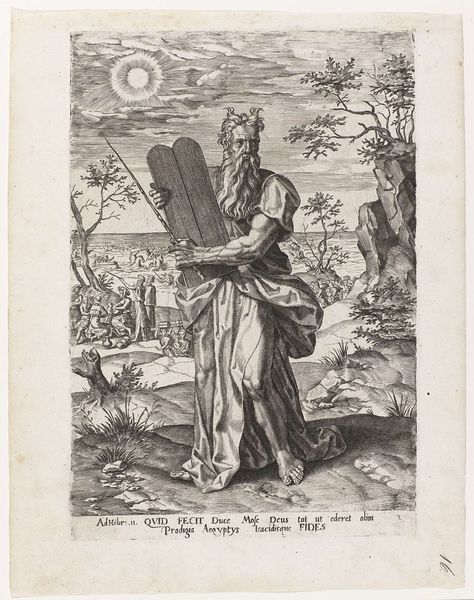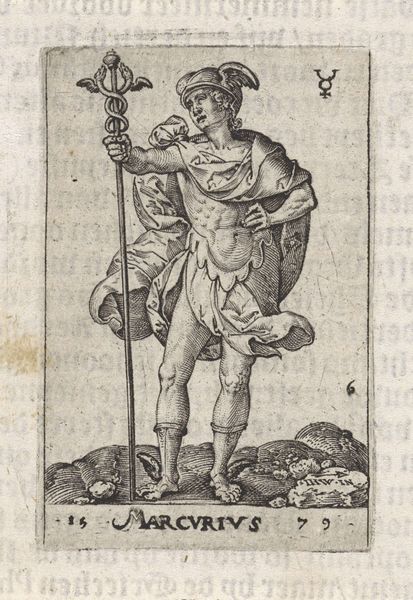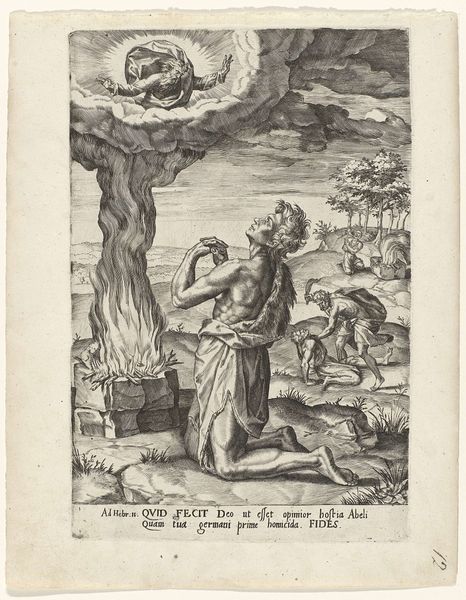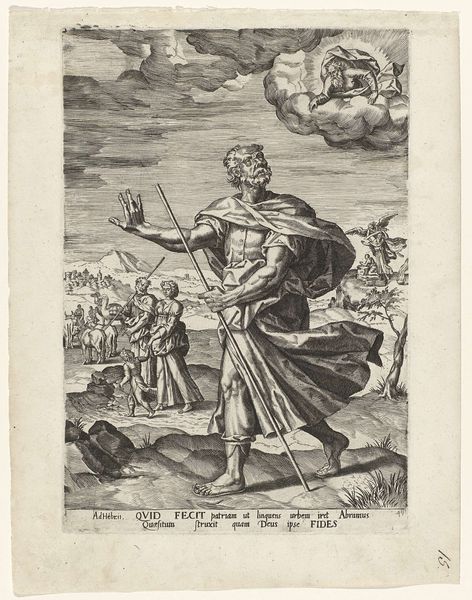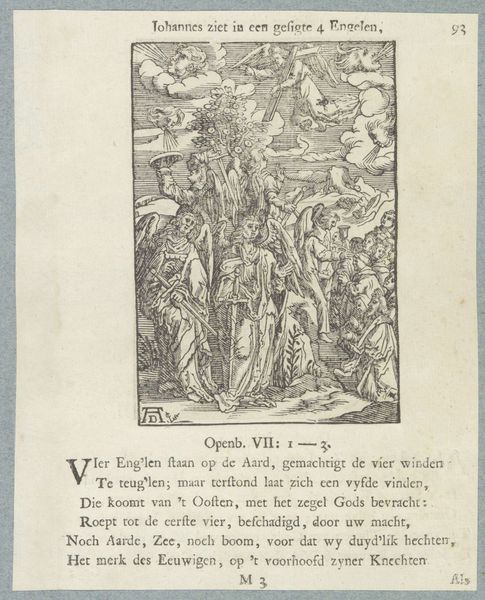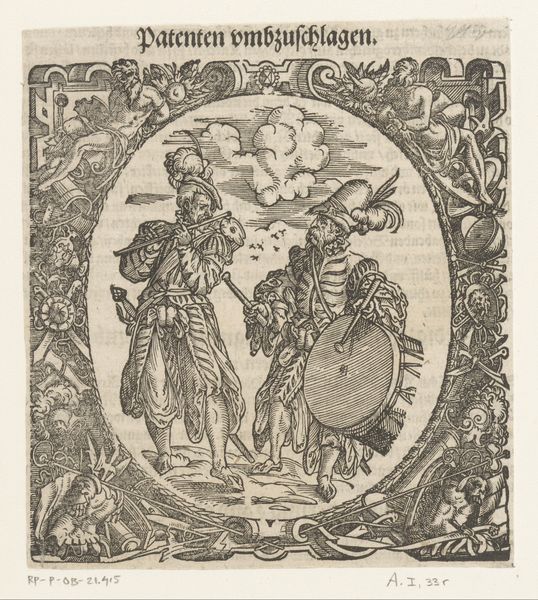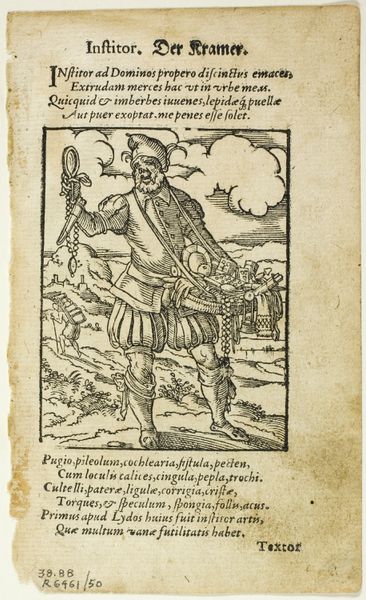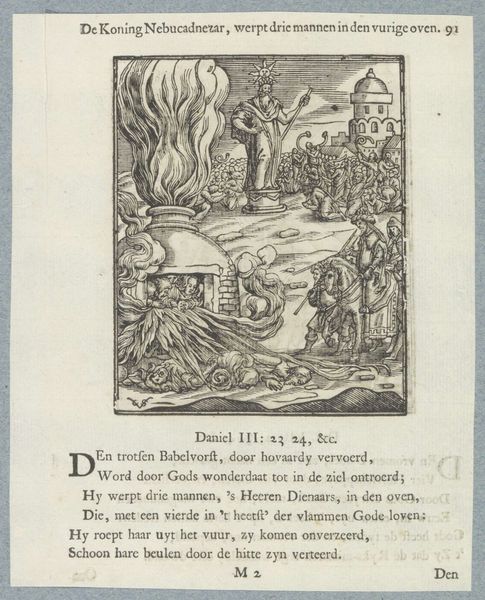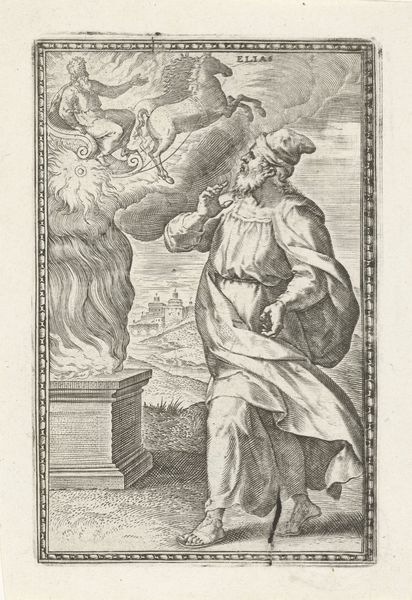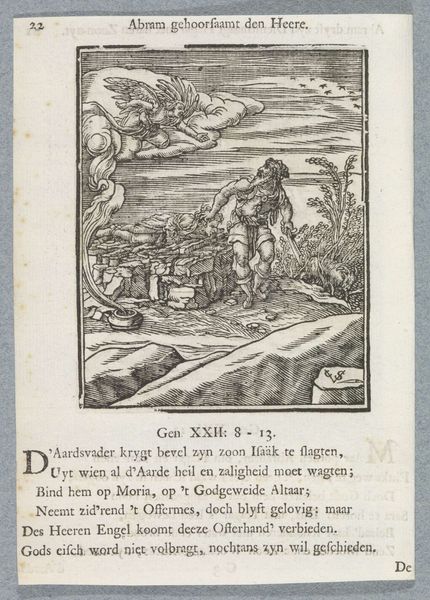
drawing, print, ink, engraving
#
portrait
#
drawing
#
pen drawing
# print
#
mannerism
#
ink
#
history-painting
#
engraving
Dimensions: height 125 mm, width 100 mm, height 158 mm, width 115 mm
Copyright: Rijks Museum: Open Domain
Editor: Here we have "Ascon, eerste hertog der Friezen," made between 1618 and 1620 by Pieter Feddes van Harlingen. It's an ink drawing, an engraving intended as a print. What immediately strikes me is how this heroic figure is juxtaposed with the chaos of fire and mythical creatures. What story do you think this artwork tells? Curator: This print presents Ascon, the first Duke of the Frisians, within a very specific socio-political context. Consider that this image emerges during a period of nation-building and a surge of interest in historical narratives. What does presenting Ascon as a heroic figure, surrounded by symbolic elements like the dragon and the burning landscape, achieve for the intended audience? Editor: So it's not just about portraying a historical figure, but also about creating a certain image or validating a specific history? The burning landscape is very striking. Curator: Precisely. Think about who would commission and circulate such an image. It’s likely meant to construct a lineage, lending legitimacy to contemporary Friesland by connecting it to a glorified, albeit possibly mythical, past. Notice the heraldic shield and the classical-style lettering too. How do these elements further shape the narrative being presented? Editor: It makes him seem more legitimate, like a real ruler with history and heritage, and more connected with classicism rather than folk history alone. I guess the art is not divorced from the message here. Curator: Exactly! It encourages us to analyze not only what's depicted but why, and for whom. By examining the cultural and political forces at play during its creation, we can truly understand its impact and intent. It highlights the intersection between art, power, and historical memory. Editor: I never considered the political side of art like that! Now I realize there’s a lot more to this image than just what's on the surface. Thanks! Curator: It works the other way, too: the "surface" and its techniques often were political in their own time, as well! A work like this becomes a great vehicle for talking about 17th century Dutch social life, even when ostensibly it's about ancient Frisians.
Comments
No comments
Be the first to comment and join the conversation on the ultimate creative platform.
